With 103 ATP titles and 20 Grand Slam’s, Federer is one of the true legends of the sport. Below we go through his career, stats and of course, what racquet and gear Federer was playing with.
Roger Federer’s tennis racquet
Roger Federer’s tennis racquet is, since post-retirement, the Wilson RF Pro, which he helped develop for the retail market. But the last years of his career, since 2014, he used the Wilson Pro Staff RF97 Autograph. This helped him win three more Grand Slam titles in 2017-2018 as he found away to be more aggressive, especially on the one-handed backhand. Before, the Wilson Pro Staff 90 was great on serve and forehand, but the small sweet spot made Roger’s backhand relatively easy prey for Nadal’s topspin.
For the many Roger fans, Wilson are now re-releasing a 90 sq inch nCode Pro Staff and an RF Pro painted in the same iconic design. You can read about the RF Classic racquets here.
Before Roger moved up to a 90 sq inch racquets and before he won his first Grand Slam, he used the legendary Wilson Pro Staff 85.
Federer strung his racquets with Champions Choice strings, a hybrid of natural gut and Luxilon Alu Power. He used string savers to extend the life of the gut slightly.
You can read more about Federer’s racquet specifications below.
Looking for new gear?
Get your tennis racquets from Tennis Only.
Our recommended tennis store for Australia!
Looking for new gear?
Get your tennis racquets from Tennis Warehouse Europe!
Use the code TNERD10 for a 10% discount right now.
Looking for new gear?
Get your tennis racquets from Tennis Warehouse.
Our recommended tennis store for North America!
Roger Federer’s Tennis Racquet Specifications
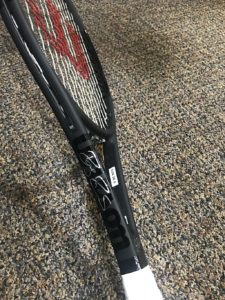
Wilson Pro Staff Roger Federer Autograph 97
Head Size: 97 sq. in. / 625.81 sq. cm.
Length: 27in / 68.58cm
Strung Weight: 12.6oz / 357.2g
Balance: 12.38in / 31.45cm / 9 pts HL
Swingweight: 335
Stiffness: 68
Beam Width: 21.5mm / 21.5mm / 21.5mm /
Composition: Braided Kevlar & Graphite / Basalt Fibers
Power Level: Low
Stroke Style: Full
Swing Speed: Fast
Racquet Colors:Red/ Black
Grip Type: Wilson Premium Leather
String Pattern: 16 Mains / 19 Crosses
Mains skip: 7T,9T,7H,9H
One Piece
No Shared Holes
String Tension: 50-60 pounds
Federer’s actual specs (no lead added, just a slightly heavier batch)
- Weight: 12.9 ounces / 366 grams
- Balance: 31.5cm / 9 pts HL
- Stiffness: RA 68
- Swingweight: 340
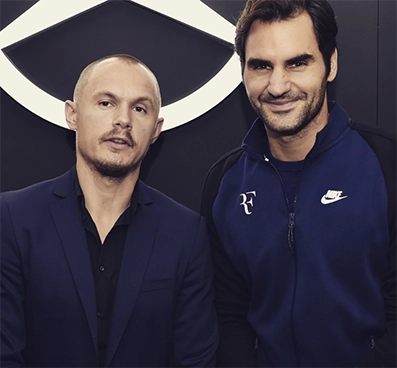
Roger Federer profile – Bio and Career
Roger Federer is truly one of the special tennis players, and it’s not just because of his talent. It’s because of what he represents in the history of tennis, and that’s a force that launched the modern era of tennis, reviving a sport that seemed to be on the exit popularity-wise.
Tennis has never really had a period without talented players, but when Federer came into the sport, he not only made it global. He ushered in an era that many tennis fans will fondly remember as the greatest era of all time.
His peak greatness might be the best tennis that was ever played, and if not, it’s certainly the most graceful the sport ever looked. He was tennis grace personified, poetry in motion if you will, and nobody ever made it look as easy as Federer did.
Biography
The backstory of Federer is quite interesting because he’s the son of a Swiss national father and an Afrikaner mother, giving him a unique background. Not only did Federer grow up bilingual, he’s also – due to his Swiss heritage – been exposed to multiple languages early on in his life which helped him tremendously during his playing days.
He was a very active kid growing up in Basel, pursuing different sports including football before finally settling on tennis. It proved the right choice as he would go on to change the game forever.
Federer started playing the sport quite early, at the age of three, thanks to his parents playing the sport themselves on the weekends. He became pretty good quickly and soon started practicing more seriously. It was at this time that he adopted that iconic one-handed backhand, despite the protests of his then coach. Federer did it because all of his idols – Stefan Edberg, Boris Becker, and Pete Sampras – used it.
He would quickly rise through the ranks of Swiss tennis, moving to the Swiss National Tennis Centre at the age of 12. He was also a ball boy at the Basel Open twice, in 1992 and 1993.
Roger Federer Professional Career Overview
To showcase the entire career of Federer, we’d need a full book, so we’ll highlight only a few things. Federer’s rise wasn’t meteoric. Unlike some other tennis players who emerged as teenagers and proved themselves rather quickly, it took a bit more time for Federer to do so.
He was a very good junior, winning the 1998 Wimbledon junior event in both singles and doubles. He also made the US Open final that year and the Australian Open semi-final. That alone proves that he was very talented, but once he got into the pros, Federer struggled a bit.
His first professional season was the 1998 season, when he was about 17 years old. He played well and won some matches but finished well outside of the top 100, being ranked 301 after the end of the season. The next year, Federer entered the top 100 in September of 1999. He won a challenger event that year and finished the season at No 64, becoming the youngest player in the top 100. Slowly but surely, he was turning things around.
In February of 2000, Federer made his first ATP final in Marseille, after which he entered the top 50. He would finish that year ranked No 29 in the world. His first title came in 2001 in Milan, with his first major Grand Slam breakthrough coming at the French Open that year as he made the quarter-finals. Federer snapped Sampras’s 31-match winning streak at Wimbledon later that year, earning worldwide fame, and marking the genuine start of his rise. He finished that year No 6 at age 21, and the rest was history.
The Swiss maestro won his first Grand Slam trophy at Wimbledon the following year and the years after that were spent adding more trophies to his cabinet. His second one wouldn’t come until next year but Federer was already a force by then. He finished as world No 2, only 160 points behind Andy Roddick who was year-end No 1 that year.

The first year Federer truly dominated was 2004, when he won three of the four Grand Slams played that year. That achievement made him the first player since Mats Wilander to do that. He also ticked off becoming world No 1 in 2004.
Federer would spend the next few years adding to his Grand Slam tally, winning his fifth overall at the 2005 Wimbledon. He would win number 10 at the 2007 Australian Open and he didn’t stop there. Around this time is when Novak Djokovic and Rafael Nadal also developed into contenders, making winning a Grand Slam quite a bit harder for Federer.
In 2008, Federer battled mononucleosis, which is a difficult disease for a tennis player to overcome. It’s a disease that leaves you feeling overall weak and fatigued. He struggled with it in the first half of 2008, and it clearly impacted his results. The disease, for example, utterly derailed the career of Mario Ancic, who was once a very promising tennis player.
The 2010s weren’t a great decade for Federer overall because he was mostly overtaken by his rivals. It was a decade in which Andy Murray blossomed into the player he could be winning a few Grand Slams. Players like Djokovic and Nadal also developed ascendancy in their rivalries, which made things harder for the Swiss ace.
He would win three more Grand Slams in those final years but also suffer what could be described as the most painful loss of his career. It was at Wimbledon in 2019. Facing Djokovic in the final, he held two match points that could have secured him a 21st Grand Slam title, yet he was unable to finish the job. The crowd was firmly behind him but it slipped away.
Not long after, his knee issues began to worsen. Despite undergoing several surgeries and making attempts to return to form, Federer eventually found the physical toll too great. His body could no longer keep up with the demands of elite-level tennis.
Retiring at the age of 41, Federer had one of the best careers of all time. When you add the impact that he’s had off the court, no player ever has had or ever will have such an impact on the sport again.
Roger Federers’s Biggest Achievements
- 310 weeks as world No 1
- 6x Australian Open champion (2004, 2006, 2007, 2010, 2017, 2018)
- 1x French Open champion (2009)
- 8x Wimbledon champion (2003, 2004, 2005, 2006, 2007, 2009, 2012, 2017)
- 5x US Open champion (2004, 2005, 2006, 2007, 2008)
What is Roger Federer’s Playing Style?
Federer’s playing style is widely described as versatile because he was simply very good at everything. He had a good serve, which worked well under pressure. He had a pristine baseline game from both sides, with his forehand being extraordinary and his backhand extremely good as well. He also moved superbly well and seemingly never got tired.
Overall, he was best described by Jimmy Connors, who famously noted that in an era of specialists, you are either a clay court specialist, a hard court specialist, a grass court specialist – or you are Federer. We’d again need a book to describe what some respected voices said about Federer, but he was generally considered a player without any flaws, with his forehand arguably one of the best in history.
When it comes to his demeanor on the court, Federer was known for his rather controlled composure. He wasn’t always cool and did have outbursts, but he was generally much more controlled than the average player.
Who were Roger Federer’s Coaches?
Federer engaged a range of coaches over the years. From ages 8 to 10, Federer was coached by Adolf Kacovsky. At age 10, he started working with Peter Carter. His first coach when he turned pro was Peter Lundgren.
Besides these coaches, Federer worked with Severin Lüthi, Tony Roche, Jose Higueras, Paul Annacone, Ivan Ljubicic and one of his idols Edberg.
What is Roger Federer Best Known For?
This is another question that would require a book to fully acknowledge everything Federer is known for, but here’s a top-level view.
First of all, he’s known as one of the best players of all time. No player played with his elegance and grace on the court and once you witness it, you can’t unwitness it. It’s that impactful to see.
Federer is also known as one of the most popular players of all time if not the most popular player of all time. His popularity is what essentially launched this modern era of tennis with many of today’s players having grown up idolizing Federer, most notably Carlos Alcaraz.
He’s also known for his iconic RF logo, which was immortalized even more by the infamous battle for the rights to use it. Then he’s also known as a fashion icon who was always meticulously dressed, even during his playing days. Who can forget those iconic Wimbledon outfits?
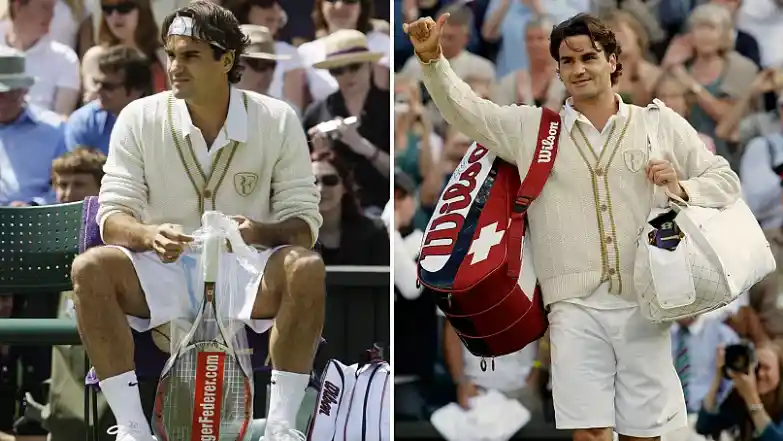
He’s also slowly starting to be recognized as a savvy businessman with his investments portfolio, which is growing by the day. He’s also known as a very proud Swissman, using every chance to promote his country and its world-famous natural beauty.
And finally he’s known as an extremely charitable individual who has never shied away from doing the more meaningful things outside of swinging racquets. He’s been involved with UNICEF for many years and more recently through his foundation which bears his name.
Lots of his activities are focused on kids and Africa due to his strong bond with the continent through his mother who hails from there. What’s even more impressive is that he doesn’t just lend his name or money to those actions but actually travels to oversee projects himself.
Interesting Facts About Roger Federer
- Was the oldest No 1 ever but has since been overtaken by Djokovic.
- Spent 310 weeks as the world number which was most at the time before being overtaken by Djokovic as well.
- Has two pairs of twins which is quite an oddity, especially since it didn’t run in his family.
- Is a big fan of food, especially Indian and Italian and famously described himself unable to resist sweet foods.
- Play the piano fairly well.
- Main hobbies include playing other sports like football as well as cards and video games.
Roger Federer’s Social Media Presence and Fan Engagement
Federer has an extensive presence on social media boasting a total of 13 million followers on Instagram alone.
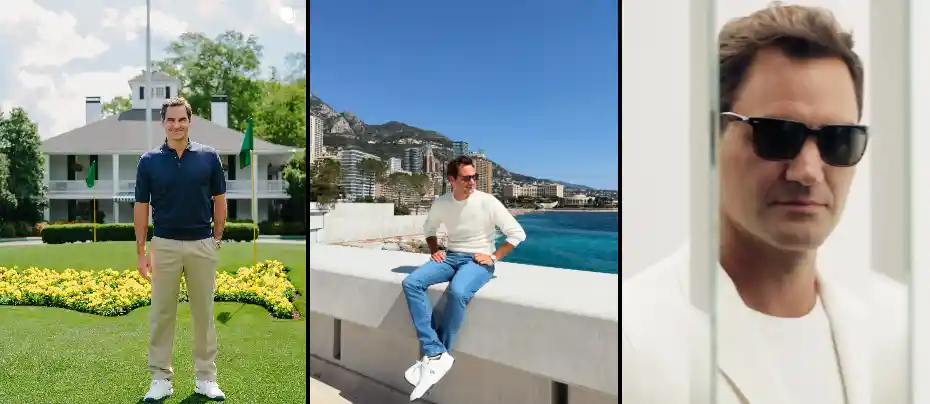
Roger Federer Net Worth
Federer earned a lot of money from his playing days, with his career earnings alone being around 130 million dollars. Add onto that the amount of endorsements he’s had over the years, and you’ve got a player who has earned well above his tournament earnings. There is also the business acumen, so most recent estimates place his overall net worth at around 550 million, which is again a guess but probably a fairly accurate one.
Federer’s Life After Tennis
Federer’s life after tennis has been mostly quiet. Well, compared to the frenzy it was before. He spends most of his time in Switzerland with his family where he lives a very private life. Occasionally he’ll make an appearance here and there at events such as the Met Gala or some events to accept a lifetime award.
He’s also very involved with his charity travelling to Africa often but for the most part he’s focused on his family life and his business ventures, most notably with On where he’s an investor.
Roger Federer’s Sponsorships and Apparel
Arguably the most marketable tennis player of all time, Federer’s status as a beloved figure and a player who has no controversies helped him secure many sponsorships over the years.
Some of the more notable ones include Uniqlo, Rolex, Wilson, On, Lindt, Jura, Credit Suisse, LVMH, NetJets and more. His sponsorships are why Federer was famously called the highest-paid athlete in the world, as they amounted to most of his earnings, eclipsing his prize money winnings by a lot.
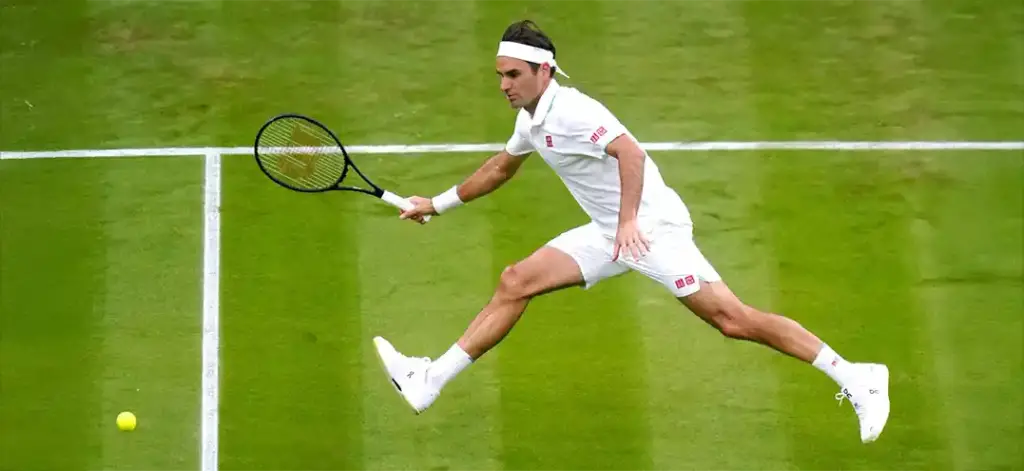



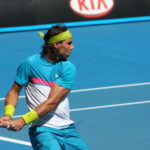
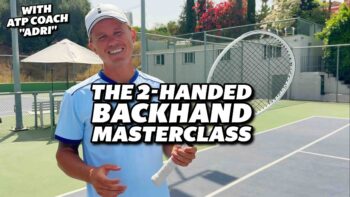
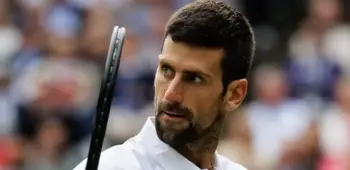
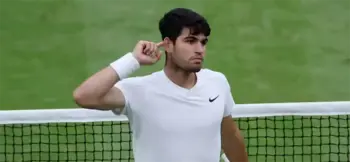
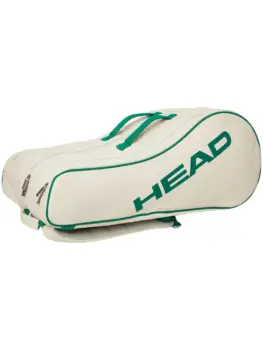

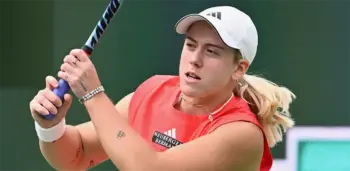
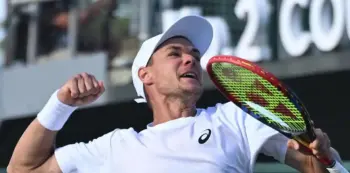

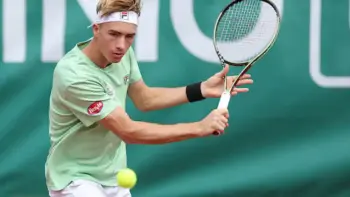

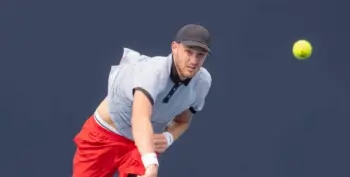
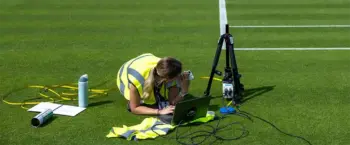

Do you know the model that Fed used when he used the 90 sq inch all of those years?
Hi Branko,
It should have been the original Wilson Pro Staff 90 (black and yellow). He went from the Pro Staff 85 to that.
Cheers / J
In Hambourg 2013, before to play with the RF97A, he tried a 98 headsize racquet. Was it the wilson prostock h22 ?
Thanks
Hi Davis,
Not sure. I’ve heard it was a H22 or at least a close mold, but I’m not sure at all. Will update you on this if I manage to find out. Cheers / J
All secrecy around RF’s raquette that gives a touch of glamour.
Hi
How reliable are the “Federer’s actual specs” you posted ?
Cheers,
Chris.
Hi Chris,
They’re measured from one of Federer’s match-used racquets so I would say they are as accurate as they can be.
Cheers / Jonas
here about 2mi.Roger starting saying about his racquet and tension https://www.youtube.com/watch?v=DRCJL2DmKnA&t=355s
I’ve been testing the RF97A for 3 weeks and have slowly started getting used to it.
My current rackets are the Head Graphene Radical Pro’s (and I had a quick dabble with the Pure Drive 2018 – bit too head light – but may return to it and put some tape in the hoop.
The RF97A whilst noticeably heavier, is just rock solid for volleys, serves and return of serves. So solid, that it almost seems to favour ‘flatter’ blocking type shots.
Where I am struggling though is generating topspin on groundstrokes with the RF97A. The heavier weight means I cannot seem to get that racket head speed to whip through and create aggressive plunging topsin shots forcing my opponents back.
I’m going to set up the same strings (Tier One) and tension as the Heads so I can do I direct comparison.
Hi Martin,
Yes, the RF97A is a very solid racquet, but I struggled with the same thing that you do – getting enough racquet head speed and top spin on my shots. Do you use CAP grommets on your Radical Pro’s? Good luck with your racquet experiments! Cheers / J
One trick with the RF97a is swap the leather grip for a synthetic and drop 10g, then use lighter strings. I used a 17g syn gut main, 18 poly cross and with overgrip got it to 338g. I have another that is at 345g with heavier strings, and another at 350g, all with slightly different weight strings.
Somedays I go for the heavier one when I’m playing big hitters. When I do a clinic with mixed players on fast indoor courts with a lot of doubles, I like the lighter one. Everything is a tradeoff.
Reducing the weight sounds like a good idea, I think it’s quite bulky otherwise. I agree that if I play more competitive matches, I play better with heavier racquets. And I very much agree that: “everything is a tradeoff”. Well put!
A tennis racket is not different to a string instrument… saving differences. For example: if you play guitar to a certain level you can feel the difference among many factors. The better you play, like in tennis the most you can tell what works for you.
The idea of starting low weight and customize is good but still a compromise nonetheless. I would suggest also that once you found certain balance that please your swing, try starting the same frame with a higher weight and achieve same balance. If this does not work, probably you are using a stiffer racket than what you need. Another issue to note, I played with rackets that were good for my game but gave me elbow pain after few days. So careful.
I find that the dynamics of the frame/strings are extremely important, so keep that in mind.
The more and better that you play, you want to achieve repeatable results as a goal.
Thanks for your comment, Claud! Some good points here! Cheers / J
Hi, thanks for posting
How do you know there is no lead
Did you look under the bumper?
Thanks
Hi,
From what I’ve heard from very reliable sources, Federer doesn’t have any lead tape on his frames. He just gets a heavier batch. Cheers / J
What are his power pads made of, there is no way you can get leather to be that thick unless you stack them, or you use black foam, which could be the right material because the people who string it reuse them as shown in footage of the Laver Cup.
They are made of leather as far as I can tell. Have a bag at home if anyone’s interested.
Hello, Dimitrov played similar rocket to Federer, I see now on French Open he has some different. Is Roger going to introduce new design as well?
Hi,
Dimitrov uses a relatively different racquet than Federer nowadays, the not commercially available Wilson Pro Staff 93S with 18×17 string pattern. But yes, he is using a new design at Roland Garros. And Wilson will release a new paint job for the Pro Staff RF97A for Wimbledon.
Hi TN,
Like your page.
I’m a bit curious about the ‘federer is just using a heavier batch’ postulate.
Recently I bought a couple of the RF97 black version.
They both came in at around 339 grams without anything added.
I play with solinco tour bite 1.30 which weighs around 16-17 grams installed to the racquet.
I add a wilson overgrip which weighs around 6-7 grams.
Finally a put on a dampener at 2.5 grams. (maybe it adds up for the power pads – dont know how much they weigh)
All in all thats about 364-365 grams pr. racquet.
Where is the difference then?
I believe that the specs you got from the match used Fed-racquet is with everything installed.
And the specs for the retail RF97 is without an overgrip and a dampener or powerpads.
Thank you.
Keep it up!
Hi,
It is not much difference to be honest! The reason I wrote “heavier batch” is that with the Wilson QC you can get a quite different spec. I had three RF97A, one was 356 strung, one was 363 strung and one was 367 strung with a slight difference in balance points.
But the listed specs are pretty much what Federer plays. A rarity of honesty in the racquet business!
Cheers / Jonas
How much are you selling for 6 power pads, because i know that the power pads are reuseable
I have quite a few so you can get new, never-used ones. I can ship them to you for 10 euro unless you live on planet Mars :)
Hi
I really like your website. It is very informative and detailed.
Do you know which string saver Federer uses?
I have recently bought string saver of Babolat, but the colour is grey, whereas Federer uses white ones.
Also, I watched a video where Ron Yu uses String savers for Federer, but there was no make on it.
Thanks
Choi
Hi Choi,
Thanks. I don’t know. Would guess it is Wilson.
Regards / Jonas
Hi Jonas, great article and pictures! Thanks :)
A few questions:
How did you get hold of one of his actual rackets?
Sorry if this is a stupid one but do the power pads make a significant difference in the feel of the ball when contact is made?
I’m curious as to why he uses the alu rough on the crosses when (in my head) surely it would generate more spin having them on the mains?
Best wishes,
Aaron
Hi Aaron,
Thanks! Sadly it was not one of the actual racquets, but I got one from the factory that was exactly his spec and then I added the same string setup and power pads to get the feel of the Federer stick.
The power pads do not alter the feel a great deal, to be honest. They were made to avoid natural gut string wear of older racquets with sharp edges, but now that is not necessary. They might dampen the feel a bit, sort of like a dampener.
I think the spin for these top players is not the issue and the feel of having the gut in the mains is much better. You could, of course, do the opposite and some players do, but it is a bit like a waste of good gut :)
Regards / Jonas
Ah I see! Thank you.
Would you say the string set up makes it one of the best set ups you’ve ever used? I’ve heard someone once describe the set up as the ‘rolls royce’ of tennis rackets/strings.
Best wishes,
Aaron
Yeah, Rolls Royce is an apt description. Great feel and performance to that setup! Cheers / J
Hi Jonas
I just can not think he uses such a stiff racquet (RA 68) . I think it’s impossible.
The build quality of the racket and the flexibility of materials must be different.
The “made in China” is not the problem, but the surgical precision of his shots would have been different with a rigid material.
And the natural gut on mains would have produced too much power with the stiffness and the open string pattern.
Strange…
Thank you
Michel
Hi Michel,
I know a guy who owns his actual racquet and has measured it on an RDC and it is actually the same specs as the retail racquets.
Federer’s 90 sq inch racquet was also close to what was sold in the stores, so that is not so crazy.
Federer’s customizers and stringers (P1) actually need to do some matching and tweaking since he doesn’t get “peRFect” frames from the factory.
I have tried his setup, weight, balance, strings, tension and you can control the power with the kind of technique Fed has.
Cheers / Jonas
what are the dots on the strings ? Weight or string straightners ?
They are string savers to help the gut string last longer.
They’re called string savers to help save the natural gut.
Dear Tennisnerd,
thanks for your very good site! I learned a lot with it. I play the RF97A with Luxilon 4G Soft and I found nothing what could be better.
I wanted to write a mail to Roger because we are lacking in opportunities to play tennis :-( , but I cannot find any address. Do you know anything, please?
kind regards
lydia
Hi Lydia,
Thanks! And good choice in racquet!
Do you want to write an e-mail to Roger Federer? I don’t have his e-mail sadly, but you can try writing to him via his Facebook page: https://www.facebook.com/Federer/
Regards / Jonas
Hi Jonas,
Thank for your answer! Too sorry, I don’t have Facebook :-( How I can reach him?
With the Autograph, it is working very well, only the serve is a little bit hardly to do. I wish to try the Serena William Autograph, one time.
kind regards
Lydia
Hi Tennisnerd,
i think, after all seeing and trying, Federer’s racquet is the best!
thanks and wish you a nice Pentecost!
Lydia
Based on the review above and the quality of your tennis racket reviews, I feel confident Fed uses very close to the retail version, which is great to know.
What really interests me is that I have seen he uses a quite low string tension, around 48lbs. So combined with a stiff and heavy frame, he must have to work hard to keep the ball from going into orbit!
What’s your take on the low tension? Did you set your demo stick up like that too?
Hey Jonas,
I’m surprised how is actual specs have 30gr less of SW compared to Djokovic for example, not that heavy for a “old” pro stick.
Any ideas on what the frame can be based on, H22?
I have a PS97 and despite Wilson claiming it’s a more manageable and lighter version of the RF, I still think the frame and the head shapes are very different.
The PS97 has a more oval shape, where the RF has a more traditional style, less round shape.
Don’t you agree?
Hi,
I would say it is more like 20 grams less SW. Djokovic is at 360 these days and Federer at 340. Fed plays with a stiffer frame and a more open pattern, which helps him kill points and use his aggressive game. Djokovic’s racquet is more suitable to defensive play.
The RF97A is simply a progression from the Pro Staff series and plays quite different than an H22 or H19 pro stock.
I thought the head shapes were exactly the shame?
Cheers / Jonas
PS. If you feel like my advice is really useful, please consider becoming a patron for $2 at patreon.com/tennisnerd and get exclusive content every week. DS.
Hi all
Found out from someone who gets Pro Stock frames from Wilson that Federer actually plays with a Pro Stock rf97. I’ve seen 3 of these selling on the internet. It weighs 332g unstrung. Federer had silicone injected into the handle and lead tape under the bumper guard. Specs are almost identical to retail version, but Federer has the ability to tweak his racquet as he likes.
This correlates with other Wilson Pro Stock frames which come in at 332g base weight for modification for pro players.
Also, power pads not only protect the string through the grommet, they also enlarge and change the sweet spot ever so slightly. You have to remember that those 6 strings are going to be a bit longer than normal. Slightly different feel, not for everybody, but Federer and Sampras are very used to it throughout their careers.
One thing to remember is that most Pro players will always use a racquet with similar specs throughout their careers. Even Federer’s PS90s were between 360g to 364g match ready (with strings, overgrips, pads and savers), balance point of around 31.5cm, and swingweight between 330-340g. Even they were Pro Stock frames, if you remember the drill patterns in the PWS of the frames, not available in retail.
Hope this helps.
Sorry, but you couldn’t be more wrong. The racket Federer uses is nothing like the model sold to the public. How do I know? I used to play tennis with Federer’s agent and we had specific conversations about Fed’s racket. He even brought one of Fed’s actual sticks to the courts after the French Open and let us hit with it. The racket he plays with is MUCH heavier than the public version and is built to Fed’s specs for weight and balance. He keeps more than 200 identical frames in a climate controlled vault so when Wilson changes graphics, Fed can ship out a dozen frames and have the new graphics applied, but he never actually changes to a new model. Recreational players could not play with his stick – or most pros’ sticks – and the manufacturers sell what is best for the pubic, not for tour players.
Hi Ibiza. So are you suggesting that all the people who have one of Federer’s actual racquets are getting the specs wrong?
Does anyone know if the swing weight of Federer’s racquet was measured with or without string?
Thanks!
There does seem to be lead tape under his racquet at 12, just like when Federer was using the smaller 90 racquet. Watch this video – he does all the measurements on camera and even shows exactly where the lead tape is.
https://www.youtube.com/watch?v=qP4GOLcbZRA&t=2s
Hi, I’ve been watching a video haw they customised Federer racket, and found it that there is difference between markets racket and his(swing weight, balance) without lead tape you can’t bring his specs, but with lead tape on hoop it’s really hard to hit topspin shot! How to make that heavier batch?
Why is his leather grip a different color? Is it just cosmetic, or does he actually use another brand.
He uses P1 leather grips, they customize and string all his racquets.
Hello Tennis Nerd,
Do you know what the actual size of the grip is? A L3 or L4?
Thank you
Great article! It’s fascinating to see how Roger’s choice of racquet has evolved over the years. His attention to detail and preference for customization really set him apart from other players. I never realized how much of an impact the right racquet can have on performance! Thanks for sharing!